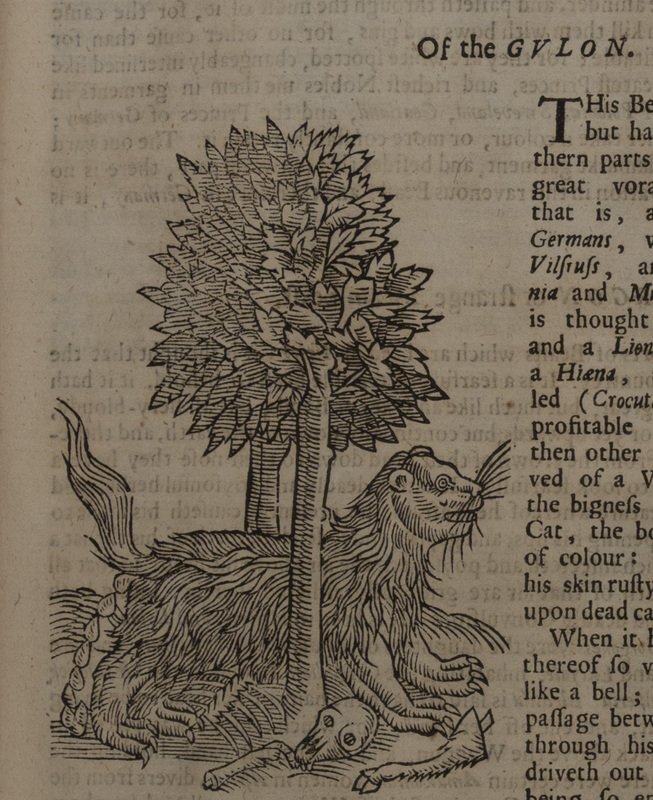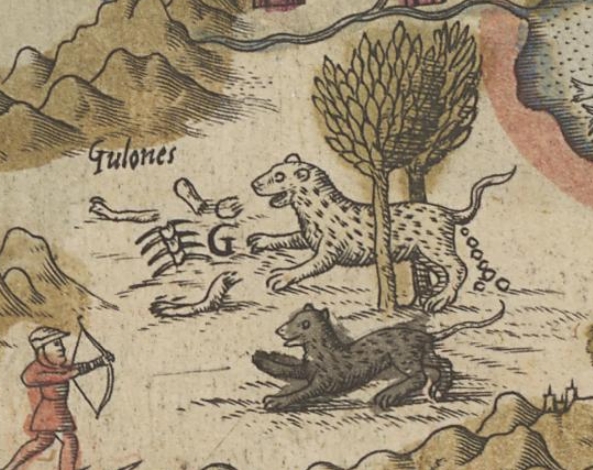Gulon
Gulon is a 'devouring' creature that has an endless craving for food.The illustration is relatively very small yet very powerful compared to the other illustrations. It contains copious amount of information regarding the beast - from its physical appearance to its personality as a glutton. The gulon is located between the two trees that stand back and forth in the middle of the illustraion. One of the trees that stand front goes right down to the body of the gulon as if the tree trunk is a dividing line between the beast's front and back that are its two distinctive characteristics, continuous devouring and excretion that are represented through its open mouth and behind. Its characteristic as a glutton is even more amplified by the illutsration of bones of unspecified animal, which, perhaps, the gulon might have devoured.
Gesner introduces Gulons as an instructive animal in the text, likening it to a person who "...forget[s] the Badges of Christians, offering sacrifice to nothing but their bellies." This sentence, obviously, does not speak for scientific observation, but instead, speaks religiously. As a protestant, Gesner's texts also include extensive contents about nature as product of God, and the appearance of animals in Holy Scripture. Therefore, when reading texts of gulon, it is worth to note that Gesner's study is not merely about tangible, observable knowledge. It, rather, is an accumulation of study of culrue of the period.
It is possible that Gessner was borrowing an image from Carta Marina by Olaus Magnus as he mentions Magnus in his text. Gulon that appears in Magnus' Carta Marina resembles a lot to that of Gesners. Similar to the illustration of a lynx, Gesner's illustration seems to be more explanatory than that of Magnus. Gesner's text exaplains that this animal has mixed characteristics of several other animals. Its face is like a cat, and paws like a dog, while its body and tail like a fox, which is much easier to trace in Gesner's illustration of gulon. Therefore, although Gesener cannot be credited for the pure originality of this illustration, it seems that he has embellished and enriched the illustration with his eager for a comprehensive image of an animal.

